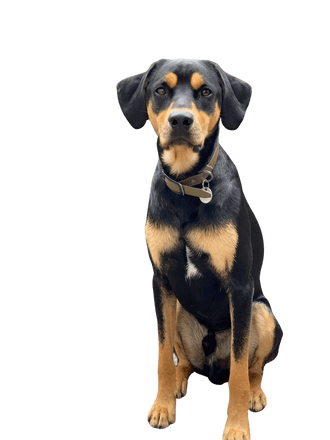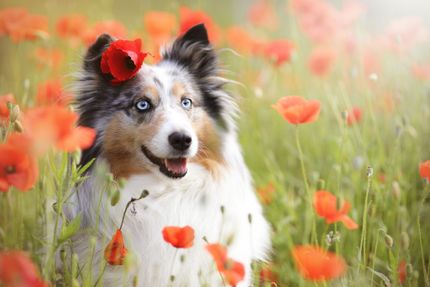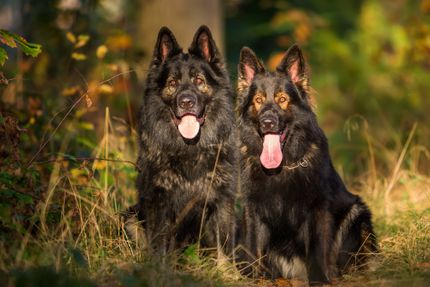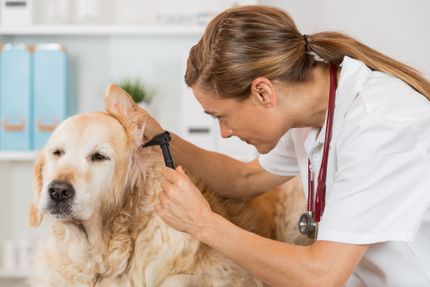
Labralas:Labrador Retriever and Magyar Vizsla Mix
Facts & Origin
Labrador Retriever and Magyar Vizsla mix - a hybrid breed.
This dog is a perfect combination of two amazing breeds. The Labrador Retriever is known for its intelligence, loyalty and trainability, while the Magyar Vizsla is an excellent hunting dog with a great sense of smell. In this combination, you have a dog that is intelligent, loyal, trainable and an excellent hunter.
What are breed characteristics of this mix dog?
The Labrador Retriever Magyar Vizsla mix has a short, dense coat that is either chocolate brown, black or yellow. They have a muscular build and are medium to large in size, weighing between 30 and 50 kg and measuring 56 to 69 cm at the withers.


| Alternate Name | Vizslador |
| Origin | UK - Hungary |
| Life expectancy | 10 - 15 years |
| Care requirements | low-maintenance |
| Activity level | average - average to high |
| FCI group | not recognised |
| AKC group | not recognised |
| KC group | not recognised |
More Labrador Retriever mixes
More Magyar Vizsla mixes
Attitude, character and temperament of the breed
Possible character traits of Labrador Retriever and Magyar Vizsla mix - Such is probably his nature.
What do you get when you cross a Labrador Retriever with a Magyar Vizsla? You get a Vizslador (Wischlador pronounced), which is also known as a Lab-Viz.
The Lab-Viz is an active dog that loves to play and has a strong retrieving instinct. It is a loyal and affectionate dog that makes an excellent family pet. They are also intelligent and easily trainable.
The life expectancy of a Lab-Viz is 10 to 13 years. They are generally healthy dogs, but like all breeds, they are prone to certain health disorders. These include hip and elbow dysplasia, eye problems, and epilepsy.
The Lab-Viz is an ideal dog for someone looking for an active, affectionate and intelligent pet. They make excellent family dogs and are relatively easy to train. When choosing a Vizsla-Labrador mix, be sure to contact a reputable breeder.
Character
Usage


Health and breeding information
What diseases can occur in Labrador Retriever and Magyar Vizsla mix.
Labrador Retriever-Magyar Vizsla mixes are prone to the same health problems as their purebred parents. These include hip and elbow dysplasia, eye problems such as progressive retinal atrophy, and heart disease. Some of these health problems can be prevented or minimized with proper diet and exercise.


What does this mixed breed look like?
Labrador Retriever Magyar Vizsla Mix breed has silky, smooth and short coat. The color of the coat can be either black, chocolate brown or yellow.
| Fur length | short |
| Fur | flat coated |
| Ear shape | Triangle - Floppy Ear |
| Tail | lang |
| Anatomy | rugged, massive, sporty |
| Size ♀ | 53 - 61 cm |
| Weight ♀ | 18 - 32 kg |
| Size ♂ | 56 - 63 cm |
| Weight ♂ | 20 - 32 kg |
| Suitable For | - |
Known Diseases
Eye diseases
Often occur with allergies and intolerances.
Elbow dysplasia (ED)
Elbow joint dysplasia is a chronic disease complex of the elbow joint of fast growing dog breeds.
Joint damage
In some breeds, joint damage can occur later in life, affecting the musculoskeletal system.
Hip dysplasia (HD)
The hip dysplasia or hip joint dysplasia of the dog (HD) is a maldevelopment of the hip joint.
Overweight
Often, unfortunately, the dogs very much under excess weight. But the dogs themselves are never to blame!
FAQ
-
The ideal weight for a Labrador Retriever and Magyar Vizsla mix is between 30 and 50 kg .
-
The average height of a Labrador Retriever and Magyar Vizsla mix is 56 to 69 cm.
-
This breed needs moderate exercise, and a daily walk or play in the garden should be enough.
-
The average life expectancy of a Labrador Retriever/Magyar Vizsla mix is 12-14 years.
-
The most common health problems in this breed include hip and elbow dysplasia, eye problems, and epilepsy.
Useful Articles
You can find articles that might interest you in the dogbible blog to match your favorite breed.
Visit our magazineto stay up to date on dog trends.
To find out more, view our Privacy Policy
Find here the breed that suits you and find out what character traits it has. Here you can also learn more about the origin, size and weight of your favorite breeds.
Matching your favorite breed, you'll find articles that might interest you on the dogbible dog blog.
Cat grass for the dog? Is there such a thing? Dangerous?
BH exam for the dog - procedure, costs, tips
Keep your eyes open when buying a puppy















